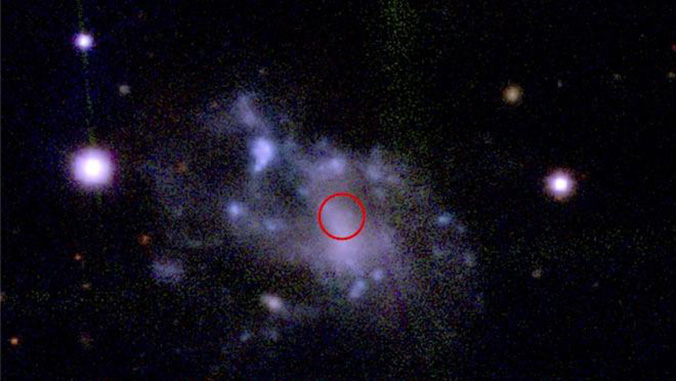
A supernova discovered by an international group of astronomers has provided an unprecedented look at the first moments of a violent stellar explosion. The team, led by the University of Hawaiʻi at Mānoa Institute for Astronomy’s (IfA) Ben Shappee and Carnegie Observatories’ Tom Holoien, found a mysterious signature in the light from the explosion’s first hours. Their findings are published in a trio of papers in The Astrophysical Journal.
This category of supernova, called “Type Ia,” is fundamental to our understanding of the cosmos. Their nuclear furnaces are crucial for generating many of the elements around us, and they are used as cosmic rulers to measure distances across the universe. Despite their importance, the actual mechanism that sets off a Type Ia supernova explosion has remained elusive for decades.
Therefore catching them in the act is crucial.
Astronomers have long tried to get detailed data at the initial moments of the explosions, with the hope of figuring out how these phenomena are triggered. For the first time, they succeeded in February of this year, with the discovery of a Type Ia supernova called ASASSN-18bt (also known as SN 2018oh).
“ASASSN-18bt is the nearest and brightest supernova yet observed by [NASA’s Kepler Space Telescope], so it offered an excellent opportunity to test the predominant theories of supernova formation,” said Shappee, who is lead author on the discovery and early-time paper. “The Kepler light curve is amazing. We can probe the explosion just hours after it happened.”
The team’s observations support a recent hypothesis put forth by visiting-IfA astronomer Maximilian Stritzinger of Aarhus University that there may be two distinct populations of Type Ia supernovae—those that show early emission and those that do not—without the need for a nearby star.
“We are finding that supernovae explosions are more complicated than we previously thought, and that’s half the fun,” said Shappee.

